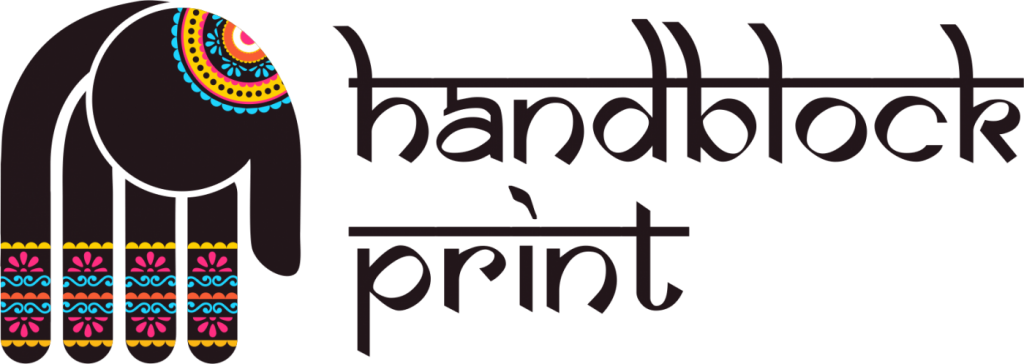Bagru Print: Traditional Craftsmanship in Natural Colors
Bagru print is a traditional art of hand-block printing that originated in Bagru, Rajasthan. Known for its earthy tones, intricate patterns, and entirely natural dyeing process, Bagru printing reflects centuries of craftsmanship from the Chhipa community. The process combines meticulous preparation, natural ingredients, and skilled artisanship to create beautiful, long-lasting prints. Here’s a step-by-step look into how authentic Bagru prints are made.
1. Preparing the Fabric (Kora Dhona)
The first step in Bagru printing is preparing the fabric by removing any finish applied by manufacturers, such as starch, so it can absorb the dyes effectively. Tarki oil, a locally available soaping agent, is used for this purpose. For every 500 meters of fabric, about 10 liters of Tarki oil is mixed into 800 liters of water. The cloth, usually a 60×60 cotton fabric, is soaked in this solution and left for 12 to 16 hours. This softens the fibers and prepares the cloth for dyeing.


After soaking, the fabric is rinsed in clean water twice to remove any remaining Turki oil and left to dry. Once dry, the cloth is ready for the next step: Harda treatment.
2. Harda Treatment (Pela Karna)
The use of natural colors begins with Harda Karna or Pela karna, where the fabric is treated with Harda powder, a natural dye-fixer made from the hard fruit of the myrobalan tree, found in the forests of Madhya Pradesh. Harda enhances the brightness of the colors applied later and provides a natural base for the dye to adhere to the cloth. Each piece of fabric is dipped in a Harda paste solution and then left to dry.


3. Beating the Cloth
Once dried, artisans beat the fabric against a stone to remove any excess Harda powder. This step ensures the fabric is smooth and even for printing. The cloth is then laid out on a 20-foot by 4-foot table layered with 20–25 sheets of jute to form a solid yet cushioned surface.
4. Preparing Natural Dyes (Rang Tayari)
Bagru printing primarily uses three natural colors: black, red, and brown, with an additional maroon color made by mixing red and black. In recent years, indigo and green have also been incorporated to add vibrancy.


- Black Dye: Made by fermenting iron with jaggery (unrefined sugar) using a natural method.
- Red Dye: Created from alum (locally known as fitkari), an antiseptic and natural ingredient. Alum paste is prepared by mixing it with Babul gum, and for visibility during printing, a local red soil, ochre, is added.
- Brown Dye: A salt-like mineral, naturally brown, is blended with tamarind seed paste to create this color.
- Maroon Dye: A deep maroon shade is made by mixing red and black in a 70:30 ratio.
These dyes are poured into mesh trays and covered with a woolen blanket called Sanj. This ensures an even application of dye onto the printing blocks.
5. Printing with Wooden Blocks (Bunta)


Each design is meticulously printed onto the fabric using wooden blocks carved from teak wood. These blocks, or buntas, are dipped into the natural dyes and then pressed onto the Harda-treated cloth, imprinting the desired pattern. The artisans use a steady hand and years of experience to ensure the precision and beauty of each print.
6. Drying and Washing
Once the fabric is printed, it is placed under the sun to dry. Sun-drying is a crucial step as it helps set the initial dye layers. After drying, the fabric undergoes a thorough washing to remove any residual mud, ochre, or excess dye, leaving only the intended patterns and shades.


7. Ghaan Rangana (Boiling for Final Dye Fixation)
In the final stage, the fabric is boiled in a large copper vessel shaped like a “U” to allow easy rotation of the cloth. Known locally as Ghaan Rangana, this process helps fix the colors permanently. Aal ka rang and daure flowers are added to the boiling water to achieve the vibrant shades that define Bagru prints. The fabric is simmered for 2 to 3 hours, allowing the colors to deepen and set.


After boiling, the cloth is wrung out and laid in the sun to dry one last time. The result is a vibrant, richly patterned Bagru-printed fabric, ready to be crafted into sarees, kurtas, dupattas, and other traditional garments.


Conclusion
Bagru printing is a labor-intensive yet rewarding process that combines natural materials and artisanal skills to produce uniquely beautiful fabrics. Every piece of Bagru cloth carries the legacy of generations, embodying the spirit and heritage of Rajasthan. By choosing Bagru-printed textiles, you support sustainable craftsmanship and honor an art form that has thrived for centuries.
